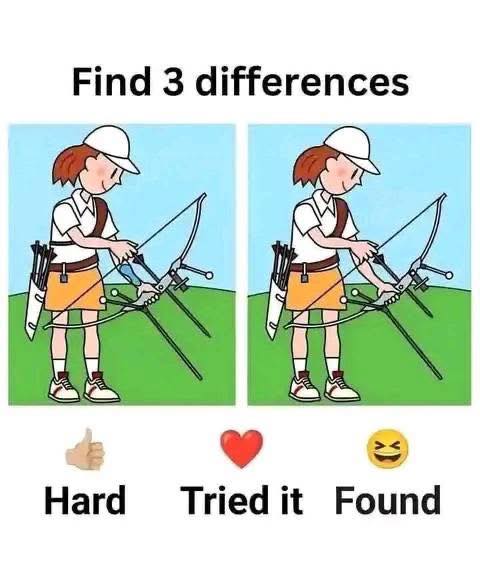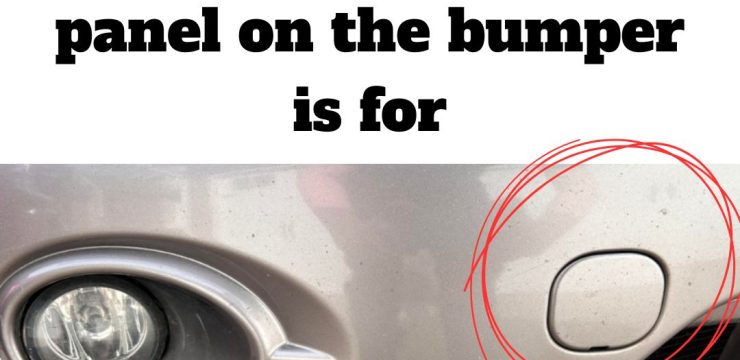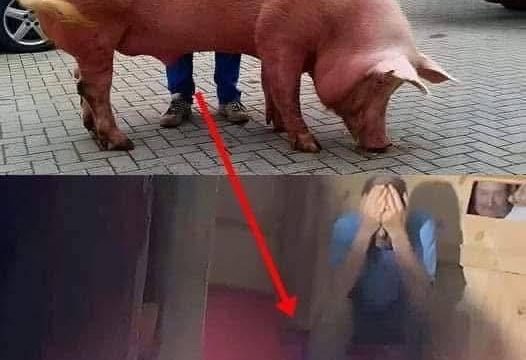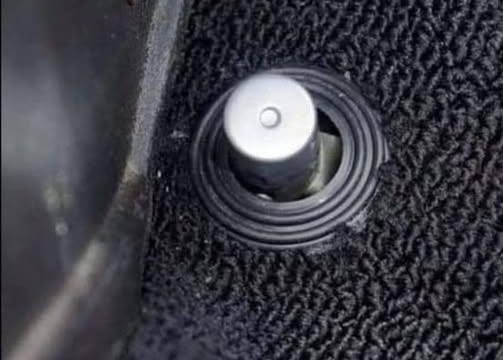If you’ve got a sharp eye and enjoy a good mental challenge, this visual puzzle is right up your alley. In this “spot the difference” game, you’re given two images of a lady archer that look almost identical at first glance. Your mission? Find three subtle differences between the two pictures—and here’s the kicker—you only have 15 seconds to do it. Sounds easy? Don’t be so sure. This test pushes your visual perception and concentration to the limit, proving that sometimes the smallest changes are the hardest to notice. Spot-the-difference puzzles have remained popular for good reason.

They’re simple in concept but provide an excellent workout for your brain. These challenges improve attention to detail, train your visual memory, and sharpen your focus—all while being incredibly fun. What may seem like a light-hearted activity is actually a form of cognitive exercise used to enhance skills like pattern recognition and mental flexibility. And best of all, they’re enjoyable for all age groups, from kids to adults. But don’t let the fun fool you—these puzzles are designed to trick you.
Our brains are wired to scan images quickly, often making assumptions about what we see. When two images are so closely matched, the brain tends to gloss over the finer details, assuming they are identical. That’s where most people get tripped up. Some common mistakes people make with spot-the-difference games include scanning too quickly without taking the time to compare areas side by side. Others make the error of only looking for major changes, like color shifts or large missing pieces, when in reality, the most challenging differences are usually quite subtle. A missing button, a flipped strap, or a faint shadow can all serve as tricky variations. Many players also overlook structural elements like equipment, background details, or hand placement, focusing too much on facial features or clothing. In the case of the lady archer puzzle, the two images show a woman readying her bow on a grassy field. She stands in a poised position, aiming forward with a quiver of arrows strapped to her hip.
At first glance, everything seems the same. But if you slow down and inspect the images methodically, you’ll uncover the three key differences. First, focus on the quiver. In the left image, it holds five arrows neatly arranged. In the right image, however, one of those arrows is missing. It’s a subtle change, but once you notice it, you can’t unsee it. Next, examine her right hand, the one pulling the bowstring. On the left side, she’s using two fingers to draw the string. In the right image, there’s a noticeable shift—she’s using three fingers instead. This minor variation in grip is a perfect example of the kind of detail people often overlook.
Lastly, take a close look at the bow itself, specifically the lower limb. On the left, the stabilizer rod extends out at a clear angle. On the right image, that same stabilizer rod appears shorter or differently angled, with part of the extension seemingly missing. It’s a tricky difference because it’s tucked away in a corner most players don’t focus on initially. So, did you catch all three differences in under 15 seconds? If you did, congratulations! Your observational skills are top-notch. If not, don’t worry. The real value of puzzles like this lies in the process. Every time you try one, your brain adapts and becomes sharper at noticing tiny changes. These games don’t just entertain—they help enhance real-world skills. People in careers that require keen observation, such as detectives, surgeons, and pilots, often use similar exercises to fine-tune their attention to detail.

Playing these puzzles regularly can improve your memory, boost your cognitive agility, and even help with decision-making under pressure. Now it’s your turn to challenge someone else. Share the puzzle with your friends and family and see who can beat your time. Did you find all three differences without peeking at the solution? How long did it take you? Let others know, and keep practicing. The more you train your mind to focus on small details, the more skilled you’ll become at noticing what others miss. Remember, every puzzle solved adds a little more sharpness to your thinking. So stay alert, stay curious, and never stop spotting the small stuff that makes a big difference.





